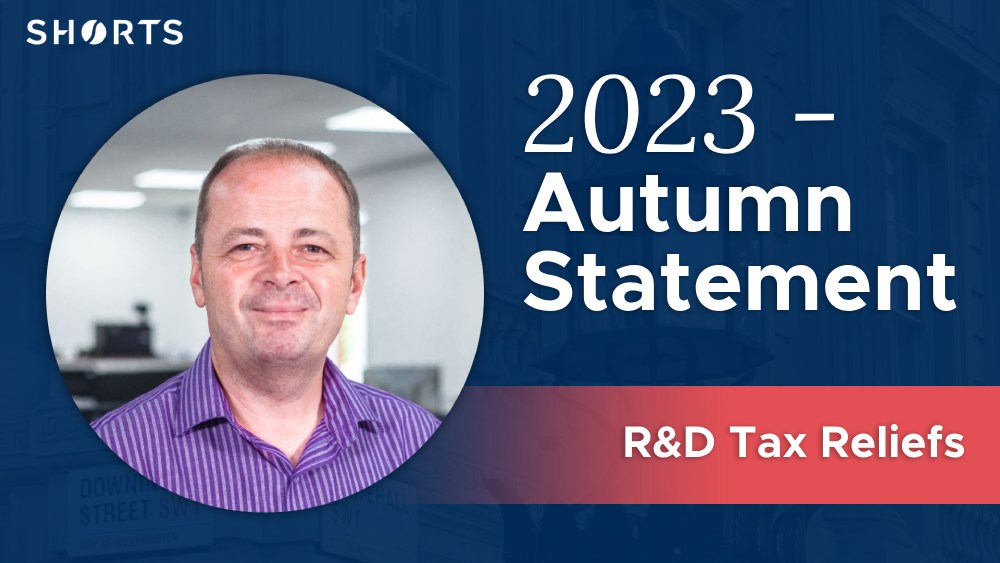
On November 22nd 2023, the Chancellor of the Exchequer, Jeremy Hunt, delivered his Autumn Statement, outlining several changes to UK tax. Particular emphasis was placed on business, and the R&D Tax Relief schemes received a lot of attention.
Here, our team will outline the main changes you need to know, whether you are an accountant helping clients submit R&D tax claims or a business claiming tax relief.
New combined R&D Tax Relief scheme
As widely anticipated in the build-up to the Autumn Statement, the current Research and Development Expenditure Credit (RDEC) and SME schemes will be combined into a single R&D tax credit scheme.
Under the unified scheme, businesses will be able to claim expenditures incurred in accounting periods starting on or after April 1, 2024. The merged scheme will adopt the existing RDEC rate of 20%.
For loss-making entities in the merged scheme, the notional tax rate will be reduced from 25% to 19%.
Based on a Corporation Tax rate of 25%, this change means a net relief of 15% (£15,000 for every £100,000 spent on R&D) for profit-making companies, 16.2% for loss-making companies, and 26.97% for R&D-intensive companies.
Additional changes
Since April 2024, several other adjustments will be implemented in the new system. Notably, R&D claimants will no longer be able to designate a third-party recipient for R&D tax credit payments, except for specific limited cases.
Moreover, as of November 22, 2023, no new transfers of R&D tax credits will be permitted, meaning that, in most instances, companies making R&D claims will receive the tax reliefs directly.
Clarification regarding subcontractors
Part of simplifying the schemes also includes clarifying HMRC’s view on subcontracted R&D. Where a company with a valid R&D project contracts out part of that work to a third party, the company will still be able to claim those (R&D qualifying) costs of that contract. HMRC’s view is that the company is the decision maker on whether the project requires R&D and also bears the financial risk.
If a company is contracted to do work for another company, but the work does not form part of R&D for the customer and is instead initiated by the contractor, then the contractor may be able to claim relief for their work if they meet the requirements of having valid R&D which is otherwise eligible for tax relief. This is considered an essential element.
This will also make the current rules on subsidised R&D expenditure no longer relevant under the merged RDEC scheme, as even if you did receive a grant or subsidy for the R&D project, the amount of R&D relief available will not be affected.
R&D Tax Support for AccountantsThese are challenging times for R&D tax relief advisers, with HMRC continuing to tweak the schemes and cracking down heavily on seemingly widespread abuse or poor practice with the scheme. If you advise clients on R&D tax reliefs and are concerned about the growing risks involved, the Radius team offers friendly, detailed, authoritative advice, risk profiling, training, and more.
|

Darryl Hoy
Darryl is the Technical Director of the Radius team. He is a specialist in Research & Development tax reliefs, having previously worked at HMRC as an R&D Tax Inspector.
View my articles
